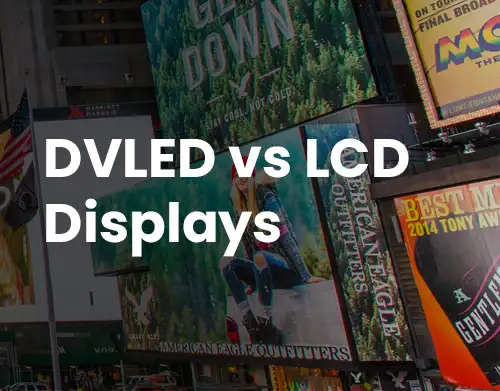
COB VS SMD LED Displays
May 30, 2023Myths and Misconceptions About LED Displays
Sure! In the world of direct-view LED displays, there are often myths or misconceptions surrounding display resolution. Let's delve into some common myths and debunk them:
Myth 1: Higher resolution always results in better image quality.
Reality: While resolution is an important factor, it's not the sole determinant of image quality. Other factors such as pixel pitch, color reproduction, contrast ratio, and panel calibration also play crucial roles. A display with a lower resolution but with superior color accuracy and contrast can sometimes outperform a higher-resolution display with subpar image quality.
Myth 2: Higher resolution is always necessary.
Reality: The required resolution depends on various factors, including viewing distance, content type, and display size. In some cases, a lower resolution may be sufficient, especially if the audience is farther away from the screen. For instance, in large arenas or stadiums, a slightly lower resolution can still deliver a visually appealing experience.
Note: The original JumboTron in Skydome Toronto, pixel resolution was 832 wide by 240 pixels high. Viewing distance and content are very important and will determine pixel pitch.
Myth 3: Displaying low-resolution content on a high-resolution LED display is pointless.
Reality: Direct-view LED displays have the ability to upscale lower-resolution content to fit their native resolution. Advanced image processing algorithms can enhance the visual appearance of low-resolution content, making it look better on high-resolution displays. Therefore, even if the content is not originally in high resolution, it can still benefit from the superior color, brightness, and contrast capabilities of the LED display.

Myth 4: Only ultra-high-resolution displays are suitable for indoor applications.
Reality: Indoor direct-view LED displays come in a range of resolutions, from high-density pixel pitches suitable for close viewing to larger pixel pitches that are ideal for viewing from a distance. The choice of resolution depends on the intended application. For example, in a control room environment, where viewers are typically closer to the screen, a high-resolution display may be preferred. However, in retail settings or large event venues, a slightly lower resolution may be more cost-effective without compromising the viewing experience.
Myth 5:Increasing resolution always leads to higher costs.
Reality: While it is true that higher-resolution LED displays generally come at a higher price point, advancements in manufacturing technology and increased market competition have led to more affordable options. Additionally, as technology evolves, the cost of higher-resolution displays is gradually decreasing, making them more accessible to a broader range of applications.

